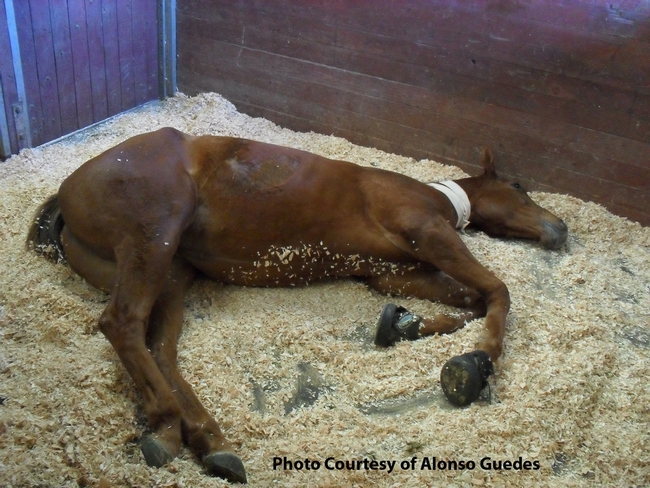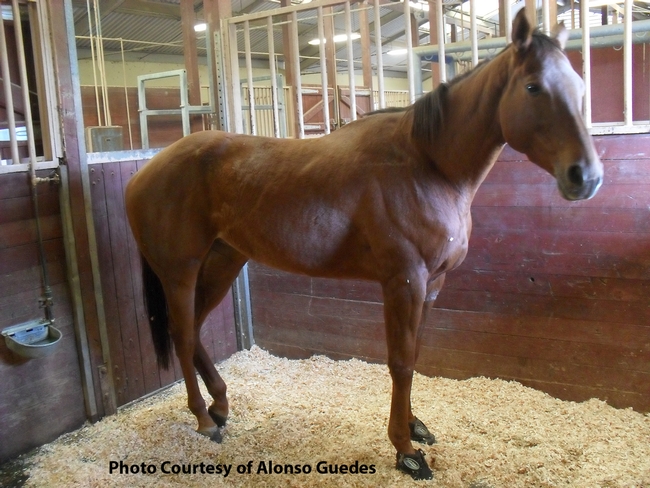The UC Davis news circulating around the world about a horse’s remarkable recovery from laminitis--thanks to an experimental compound--has an insect connection.
But first: the news story. Veterinarians at the UC Davis School of Veterinary Medicine recently announced “plans to conduct the first clinical trial of an experimental drug that has shown promise in treating horses stricken with laminitis, an excruciatingly painful and often life-threatening foot-related disease,” wrote Pat Bailey of the UC Davis News Service. See news story and accompanying video.
“Four horses suffering from laminitis have been treated with the investigational anti-inflammatory drug so far. One experienced a complete remission that has lasted for more than a year, and three others have shown some improvement.”
The horses were treated under a "compassionate use" protocol approved?by the UC Davis Institutional Animal Care and Use Committee. That protocol allows animals to be treated with an experimental drug if no approved alternative treatment exists.??A clinical trial to assess the drug's safety and establish a tolerable dose for the compound is expected to begin in the spring. Further clinical trials would be needed to establish the drug's effectiveness as a laminitis treatment.

“In reality, we found the soluble epoxide hydrolase target in mammals while studying the mammalian metabolism of a green pesticide based on the insect juvenile hormone,” Hammock told us this week.
“Neuropathic pain is an unmet medical need. Nonsteroidal anti-inflammatory drugs are counter productive—aspirin, Advil and Motrin make it worse."
Our compounds, he said, work in morphine-resistant models of diabetic pain.
Neuropathic pain comes from nerve damage--professional football, car wrecks, pinched nerves, but also diabetes--sugar spikes make nerves sick.
The experimental compound is known t-TUCB and as Hammock says, belongs to a group of anti-inflammatory compounds called sEH (soluble epoxide hydrolases) inhibitors. Hammock discovered the compound more than 40 years ago while he was working on basic insect research.
So that's how horses and insects, and entomologists and veterinarians, are connected.
And laminitis? It's extremely painful and involves inflammation of a horse's nailbed, which as Guedes explains, is the connective tissue where the horse's hoof and lower foot bone join. The survival rate for laminitis is about 25 percent.
The horse below is Hulahalla, a three-year-old thoroughbred filly with acute laminitis in both front feet. In the first photo, she refused to stand up. When given the compound, she was up within three hours.
The entomology-veterinary collaboration is very exciting--and to think this all originated when Bruce Hammock's basic research on insects. Hammock began this research at UC Berkeley and then went on to join the UC Davis faculty. He holds a joint appointment with the UC Davis Department of Entomology and the UC Davis Comprehensive Cancer Center, directs the campuswide Superfund Research Program, the National Institutes of Health Biotechnology Training Program and the NIEHS Combined Analytical Laboratory. He is a Fellow of the Entomological Society of America, a member of the prestigious National Academy of Sciences, and the recipient of the UC Davis Faculty Research Lecture Award in 2001 and the Distinguished Teaching Award for Graduate and Professional Teaching in 2008.
Attached Images:


